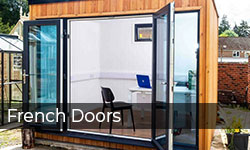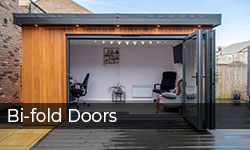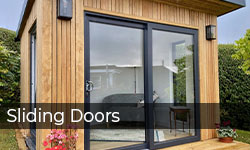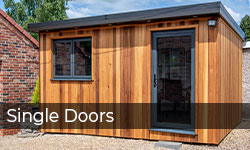
Sliding Doors
Sliding Doors
Sliding doors, as the name suggests, are made up of different panels that are placed on the threshold, with rails at the bottom and top on which they move sideways. This type of door can vary a great deal on the size as the panels don’t need to be “average size doors” as with the French style. They are also cost-effective and require little to no maintenance. One of the advantages of this kind of design is that they can have ultra-thin borders, giving the garden room an ultra-modern look. Another option to consider is having a “pocket wall”. If one of the sides of the threshold where the door will be built is bigger than the sliding panels, these could be designed so they fit all the way into the said wall, leaving no trace of the door.
Thoughts: sliding doors are a great and slick-looking option that will always feel contemporary, but they will “retract” to the size of one panel unless you manage to “pocket” them in a wall. This way you don’t need to keep the floor around the door clear as with the French style, but you are still bound to how much you can push all the panels against one side.
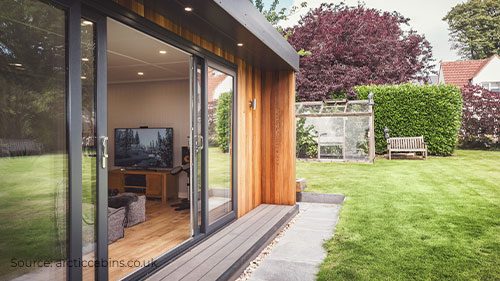
What Are Sliding Doors?
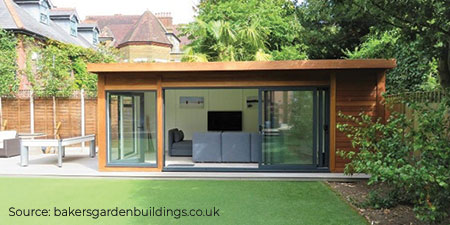
Sliding doors are an alternative standard option offered by some companies. There is, however, nothing standard about a garden room fitted with sliding doors, as they create a great connection between room and garden.
Standard size sliding doors can be a cost-effective way of creating a large expanse of floor to ceiling glazing. They can be manufactured in custom sizes too, with extra-wide sliding doors a hallmark of high-spec bespoke garden room designs.
Commonly, sliding doors have two leaves which bypass each other on the track. On wide configurations, you will find that three doors are often used that slide to one side of the opening, stacking over each other.
Standard design sliding doors, push to one side, stacking one on top of the other. This allows for easy movement in and out of the building, but you don’t get as large an opening onto the garden, as you do with some of the other door options.
Sliding doors are a great choice if you are adding a veranda along the front of your garden room, as you don’t have to allow for the swing of the door when positioning furniture or pots.
What Are French Sliding Doors?
French sliding doors are a cross between the two options already described. At first glance, they look just like outward opening French Doors. When you come to use them though, they are sliding doors.
Rather than one door bypassing the other, as we have seen above, this style of door meets in the middle, with each door sliding to one side. When open, the doors neatly stack in front of the sidelight windows.
With French sliding doors, you do not have the swing of the door to consider; this makes them particularly useful in situations where you want to sit in front of the garden room, for instance on a veranda.
The way the doors sit, when opened over the sidelights creates a wide opening between the room and garden. They are a great choice if you want to create a free-flowing movement between the garden and room.
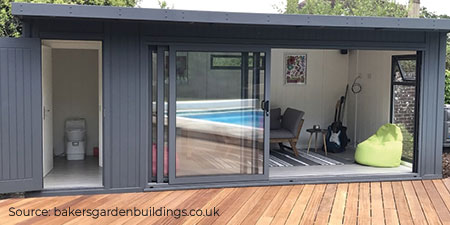
What’s The Difference Between Aluminium Sliding Doors & uPVC Sliding Doors?
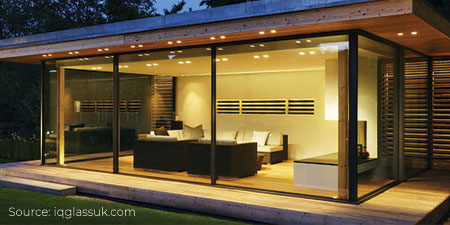
There are a range of unique features that come with both aluminium doors and uPVC doors.
Aluminium Sliding Doors are a lightweight and robust product that looks visually stunning. They comprise of ultra-slim sightlines and expansive glazed panels, which allows you to enjoy beautiful, uninterrupted views of your country, coast or city surroundings. Without compromising on their impressive aesthetics, you can also benefit from their excellent performance. Their robust frame results in improved energy efficiency, durability, weatherproofing and enhanced security.
uPVC sliding doors are also a lightweight structure that will give you a visually brighter space through their large glazed panels. The profile of the sliding doors are slightly more bulky in their appearance, meaning they don’t look as sleek as their aluminium counterparts. They do offer a set of incredible performance features including superior thermal performance, enhanced security and improved durability.
Are Aluminium Sliding Doors Better Than uPVC Sliding Doors?
Aluminium sliding doors are an incredibly worthwhile investment that offers exceptional durability. Aluminium is an inherently robust material, which is why our sliding doors have been manufactured using it. Its strength will give you several years of service, meaning you can enjoy your aluminium sliding doors without the worry of needing them replaced soon after their installation. They are incredibly resistant to harsher weather climates. You needn’t worry about your doors warping, cracking, rotting or twisting that is commonly associated with timber and uPVC profiles.
uPVC Sliding doors are made using high-quality uPVC materials and manufactured by industry-leading brands. Unlike timber materials, uPVC will not rot, meaning you can enjoy your uPVC replacement doors for several years, without the worry of them becoming damaged. When it comes to temperature changes, uPVC has been known to expand and contract as much as 3mm per metre depending on how warm or cold it is. We all know how unreliable the British weather is, so if you invest in uPVC sliding doors, then be aware that your doors may not cope well with harsher temperatures.
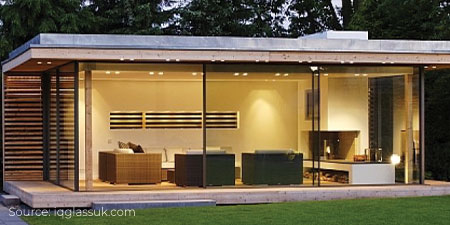
Which Is More Efficient: Aluminium Sliding Doors or uPVC Sliding Doors?
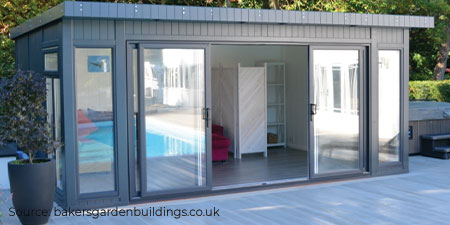
Both types of sliding doors offer unrivalled thermal performance.
The modern design and robust profile of the aluminium sliding doors ensure that your garden room in benefits from excellent insulation. Not only do the doors look, stunning, but the sturdy frame has been designed to retain heat, keeping your property warmer for longer. This, in turn, reduces the amount of energy you consume, which results in lower future energy bills. Aluminium sliding doors are a cost-effective solution that will also help to reduce your carbon footprint.
Although uPVC isn’t as robust as aluminium, uPVC sliding doors can still offer great thermal performance. Usually made up of a multi-chambered profile, the unique design of the doors will keep any property well insulated through the colder months of the year. This allows you to save money on your energy bills and still enjoy the space without the worry of cold draughts affecting the performance.
Aluminium Sliding Doors VS uPVC Sliding Doors: Which Is More Secure?
When it comes to security, you want to be sure that your replacement sliding doors are incredibly secure.
We have already mentioned that aluminium is an inherently robust material. This works well in providing superior security. Combining the sturdy frame with state-of-the-art locking systems, you are guaranteed to receive sliding doors that look incredible, but also keep you and the contents of your garden room safe. You’ll be able to sleep comfortably knowing that any unwanted intruders will be stopped from entering your property.
uPVC is also incredibly strong and will provide you with enhanced safety and security. Stringently tested, the sliding patio doors will keep intruders out, giving you the peace of mind you need. uPVC isn’t as strong as aluminium but can provide you with efficient security at an affordable price.
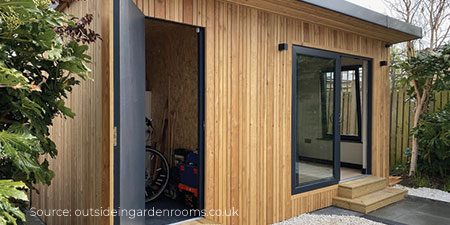
How Much Do Sliding Doors Cost?
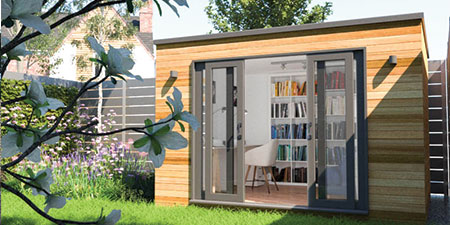
uPVC sliding doors are a more cost-effective solution than aluminium sliding doors. However, uPVC profiles aren’t as robust and secure as aluminium doors, meaning you would potentially need to replace the doors a few years after installation. Over a long period of time, this would make uPVC sliding doors an expensive option.
The enhanced durability and security of aluminium sliding doors makes them an incredibly cost-effective solution that will provide you with several years of service. The unique powder coating and sturdy profile make them resistant to fading, cracking and warping, making them incredibly low maintenance. Aluminium doors will give you the peace of mind you need and are the perfect way to enhance your UK garden room






